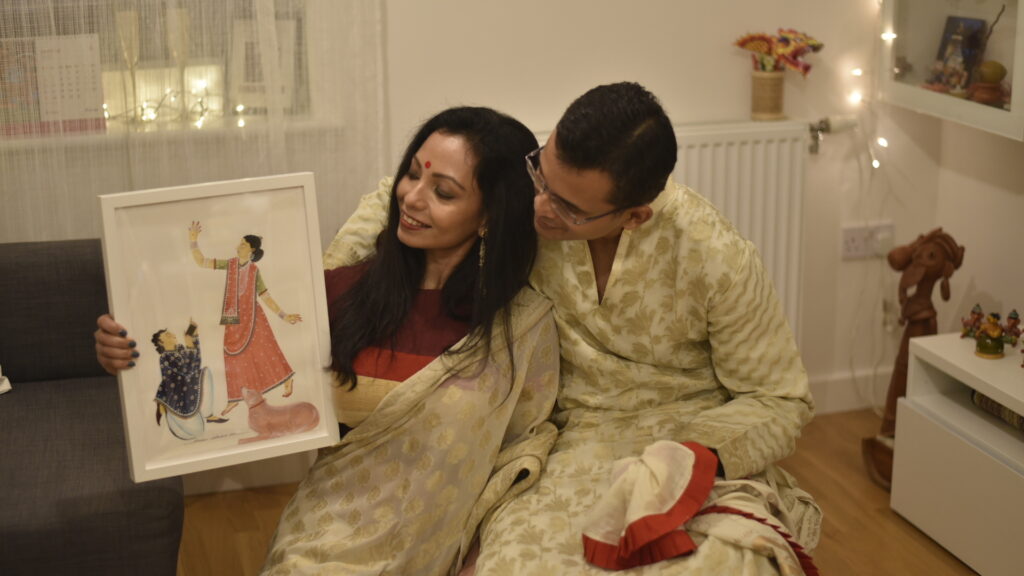
In the 19th century, Kolkata (then Calcutta) was the thriving capital of British India. As the city continued to flourish, it gave rise to a new class of locals- the Babus and the Bibis. The Bengali Babus were educated in English, enjoyed a western lifestyle, patronised arts and culture and indulged in personal grooming and fashion. They also made some questionable decisions in their personal and professional lives, but that is a different matter! The wives of the Babus, popularly called the Bibis, took a keen interest in fashion to the extent of incorporating French and English elements in their wardrobe. Although they were not the empowered women we ideally want to see, they received some opportunity to study and explore the outside world, making them more progressive than their female ancestors.

The decadent lifestyle of this nouveau-rich class captured the imagination of folk painters and thus started a new genre of art – the Babu and Bibi series of Kalighat painting.

Kalighat is a locality in South Kolkata, and one of the prominent holy sites for Hindus. Here resides Kali, the fierce form of Mother Goddess fondly revered across Bengal. With Her blessings, Kalighat became a popular pilgrimage and the local commerce attracted migrants looking for better opportunities. Among them were the Patachitra artists who used to sell paintings of religious figures as souvenirs to the pilgrims. Patachitra originally is a form of scroll painting with a narrative. As the painter unrolls the scroll, moving from one scene to the next, they sing out the story. The Kalighat style however focussed on single scenes. At first, they painted mythological characters. But with storytelling in their genes, soon started to depict aspects of daily life. As the demand for paintings diminished, artists moved on to make clay sculptures of religious figures, a practice that continues even today in the lanes of Kalighat. The Victoria and Albert museum in London has the world’s largest collection of Kalighat paintings.
Bright colours ✅
— V&A (@V_and_A) April 5, 2020
Bold outlines ✅
Kalighat painting evolved as a unique genre of Indian painting in 19th-century Kolkata (formerly Calcutta), in West Bengal. We hold the largest collection of Kalighat paintings in the world – discover more here: https://t.co/hu0LGNgcki pic.twitter.com/HLnnXz6N2P
Humour has often been an effective tool to highlight social evils. Babu culture, with its pomp and grandeur, was also associated with corruption and debauchery. The Kalighat paintings had unmissable satirical element and Bibis were often found beating Babus with broomsticks for spending time with women of ill repute!

With Indian independence, Babu-dom gradually lost its importance. In popular culture, the anglicised, ‘proper’ Bengali gentleman is still fondly called Babu, though the word Bibi never caught on. Vikram and I, with our sartorial savviness, have often been called Pater Babu ar Bibi, the Babu and Bibi from Patachitra painting, a colloquial term used to lovingly describe the well-dressed gentleman and lady.

Few months ago, I stumbled across a viral painting of Babu and Bibi taking a selfie with their dog. This is among a series of works by new age Kalighat style painter Bhaskar Chitrakar.

Bhaskar is a fourth-generation artist and is currently the only practitioner of Kalighat style who lives in Kalighat. His father, late Dulal Chitrakar was a sculptor who painted as a hobby, like his father. He however encouraged his son to paint, advising him to find his own style instead of blindly copying his predecessors.

Bhaskar told me that from childhood he was fascinated with the Mughal style of miniature paintings and if you look at his creations, the influence is obvious. Most of his works are on the lives and times of the Babu and Bibi of today with enough quirky elements thrown in between.
It is admirable how he has added a modern twist to the traditional Kalighat school, thereby bringing back focus to the art of his ancestors.
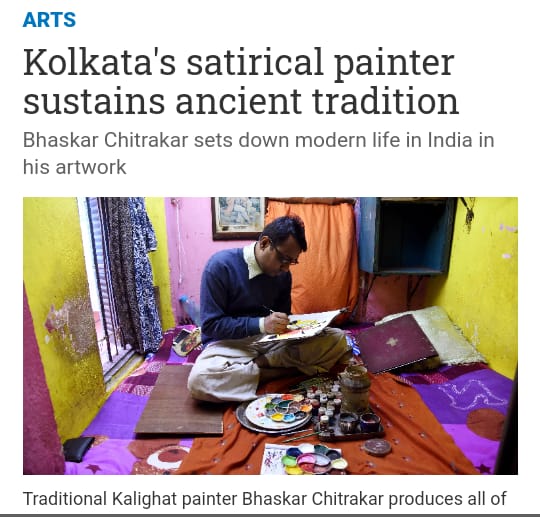
Few months ago, I contacted Bhaskar to commission a painting. I provided him with two reference pictures, one where Vikram is recording my dance on his mobile, and another where our pampered paws Chewy is wondering why we are not paying him enough attention! I gave him creative freedom with just one request, Babu needs to be clean shaven, because that is how I like my man!


Impressed with the end result, my cousin Arnab also commissioned a painting and few of his friends followed. I have people asking me for contact information of craftspeople often, but I never get to know if they purchased anything. This time I was aware though, that a talented young man managed to sell at least four paintings because I had come across his work online. It sparked a new idea in me, and this blog was born.

Bhaskar uses powder pigments on paper and it only takes him a few days to finish one painting. He lives close to my parental home in Kolkata and delivered the product himself. Many of his clients live overseas and he can arrange international delivery if required.
I called him this week to seek his permission for this post. He said he and his family enjoy my dance videos, his favourite being ‘Dafli-wale’.

Art form- (modified) Kalighat painting
Artist- Bhaskar Chitrakar
Contact- +91 90517 32406
Social media- https://www.facebook.com/bhaskar.chitrakar.9
Language(s) in order of preference- Bengali, Hindi, English


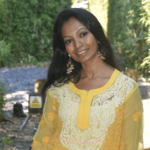
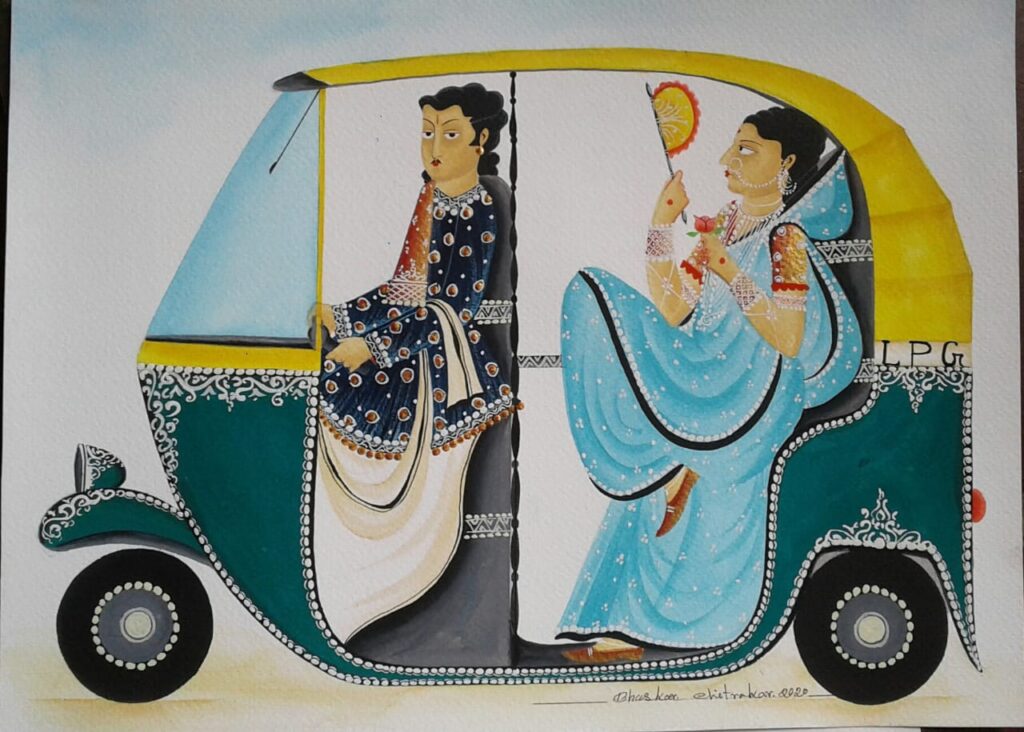
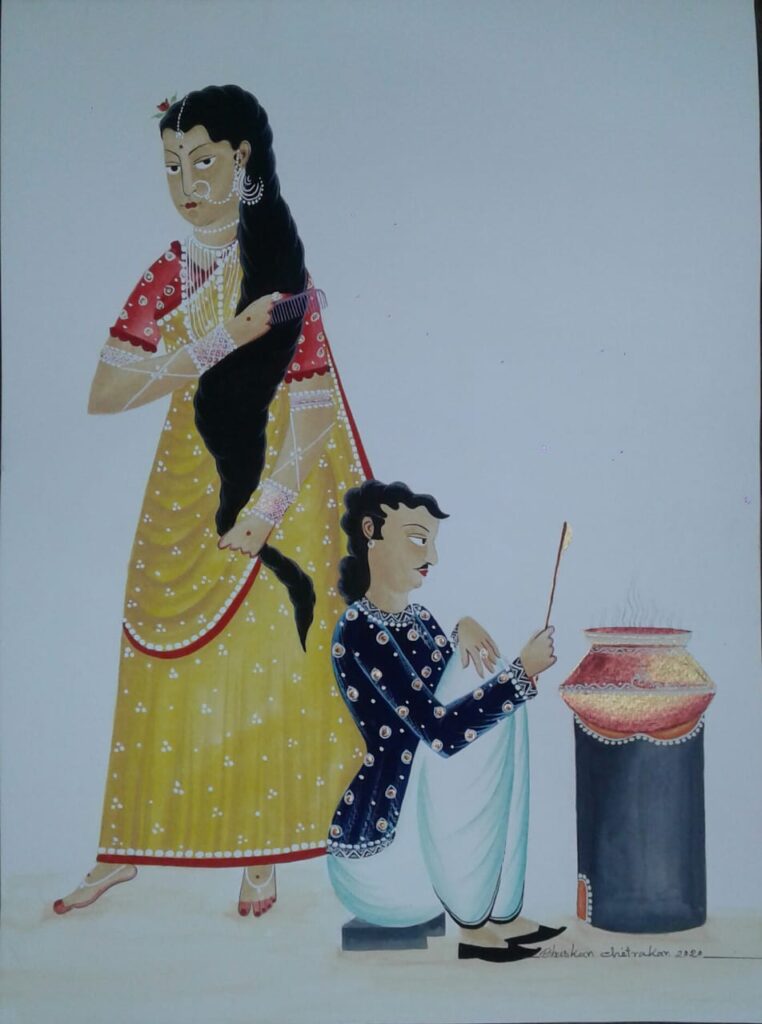

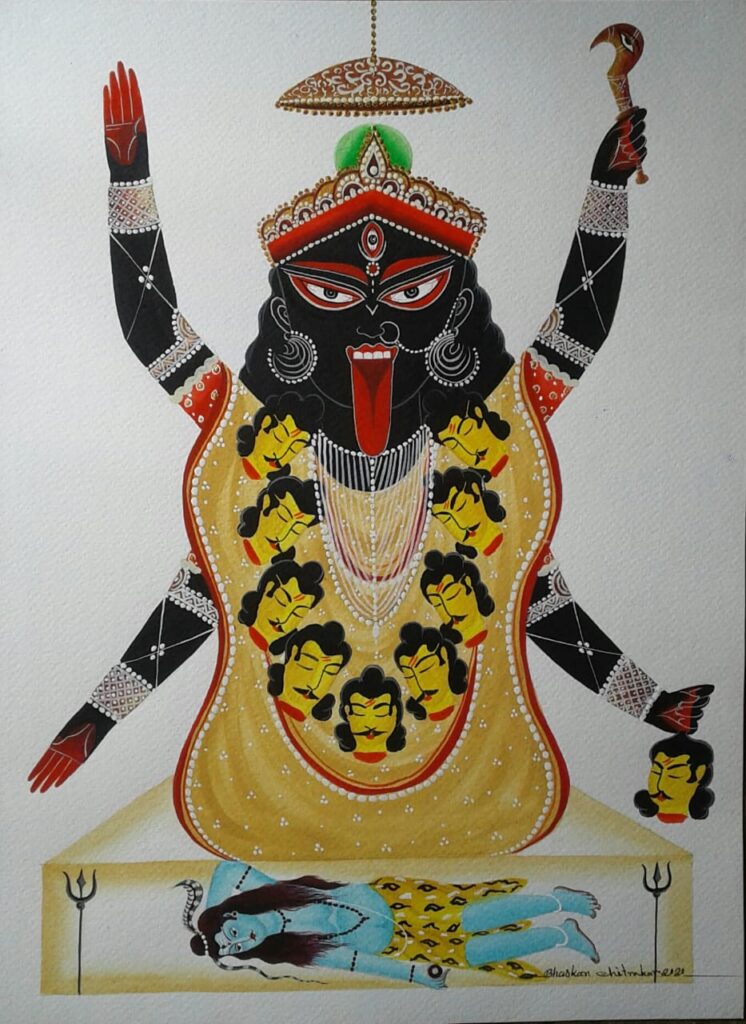

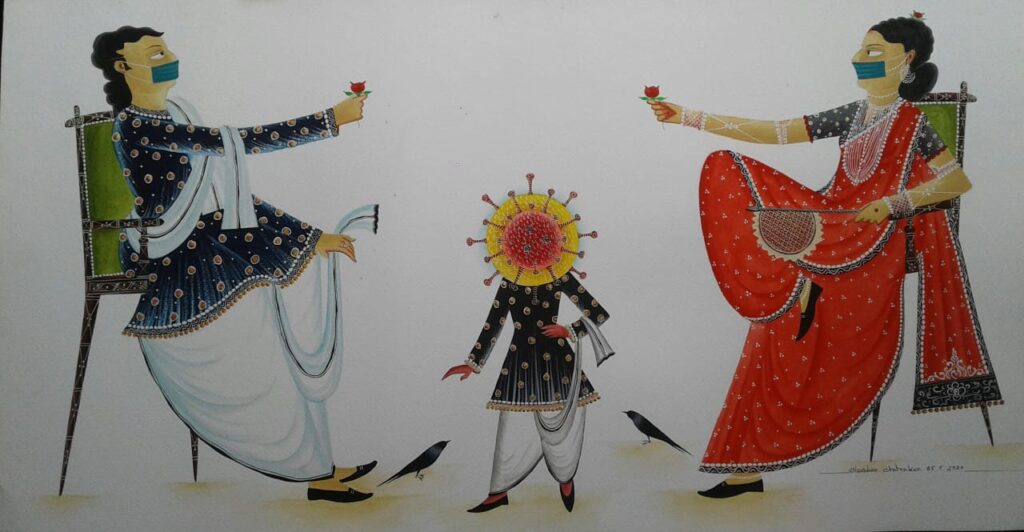



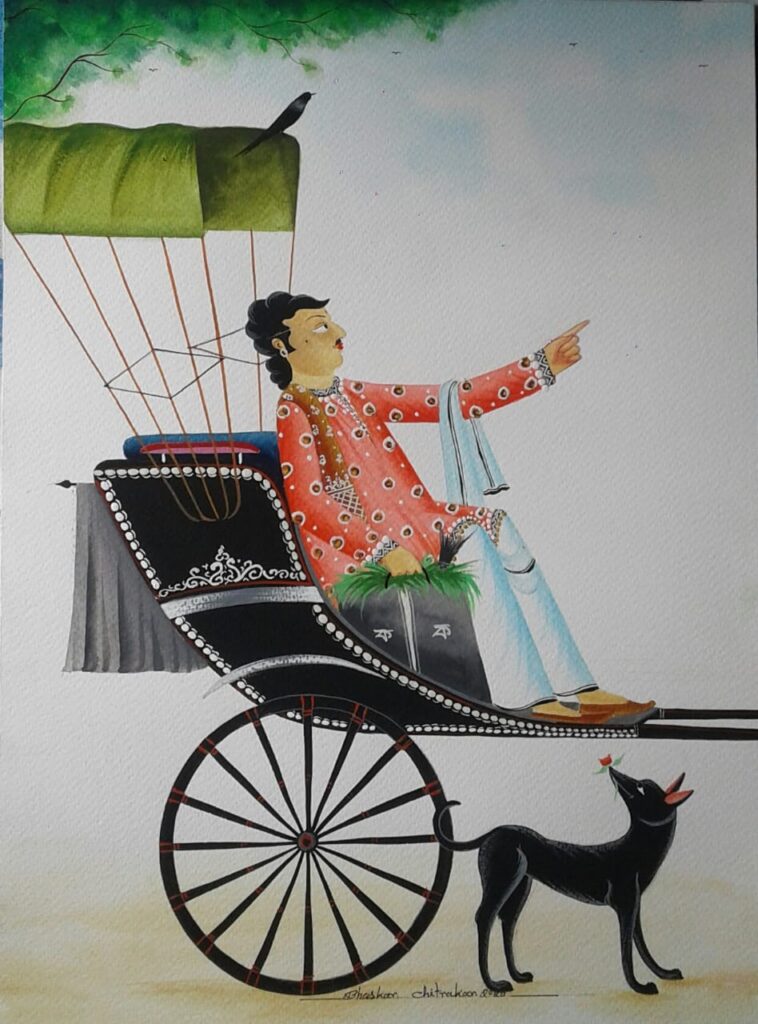
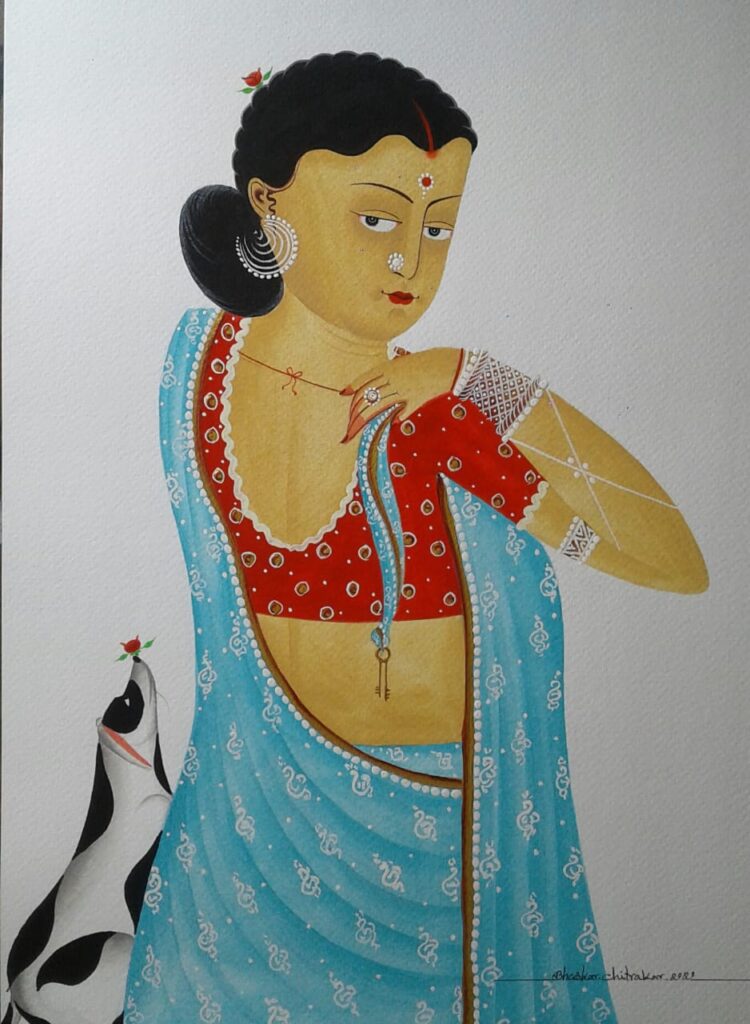

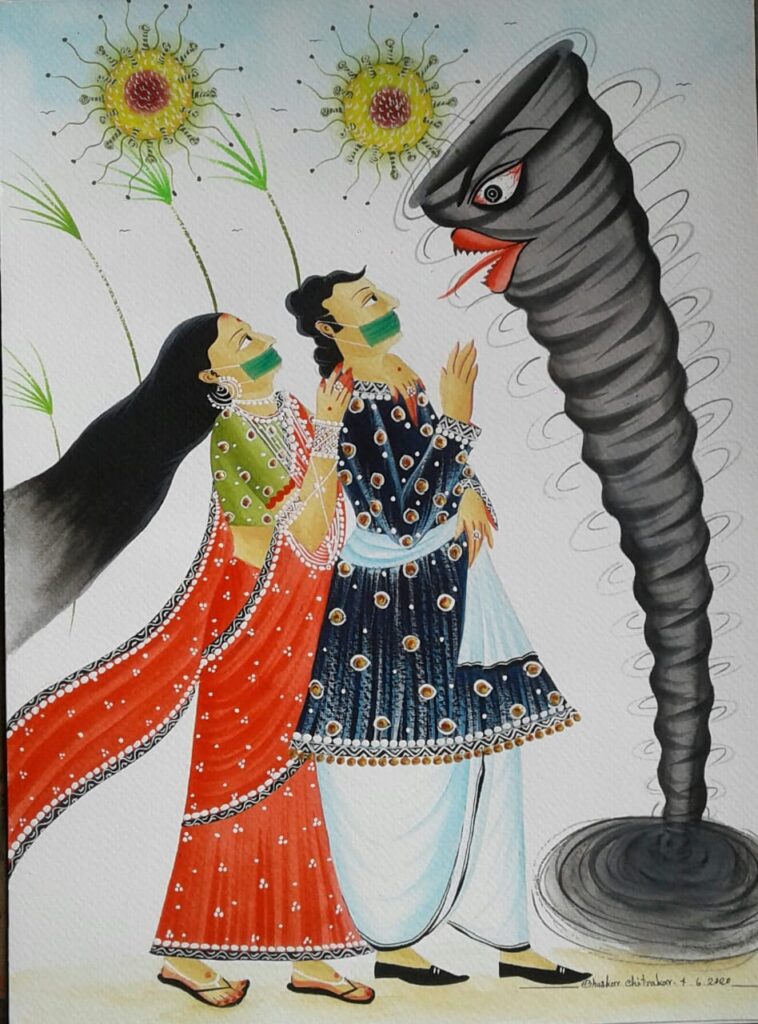
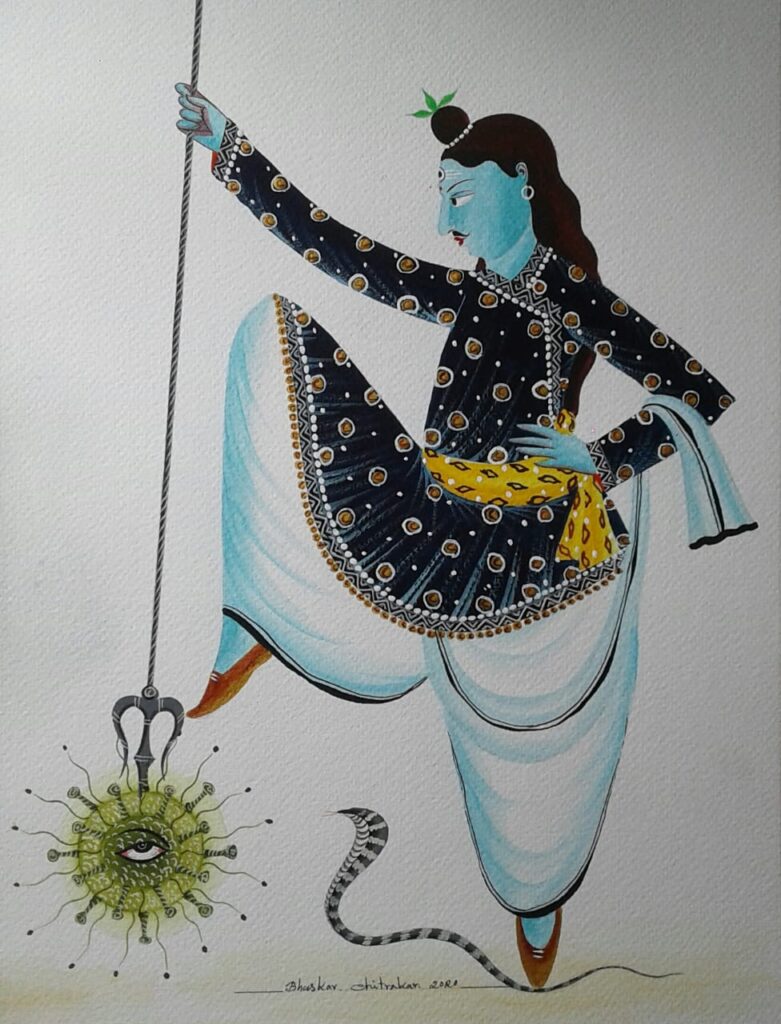


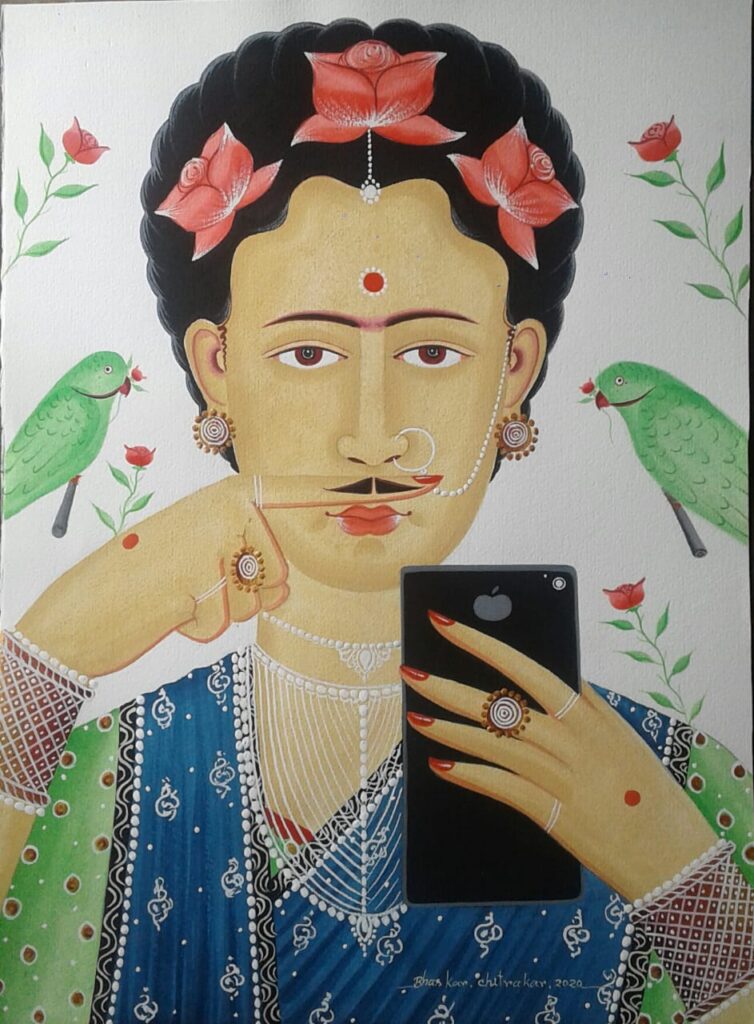
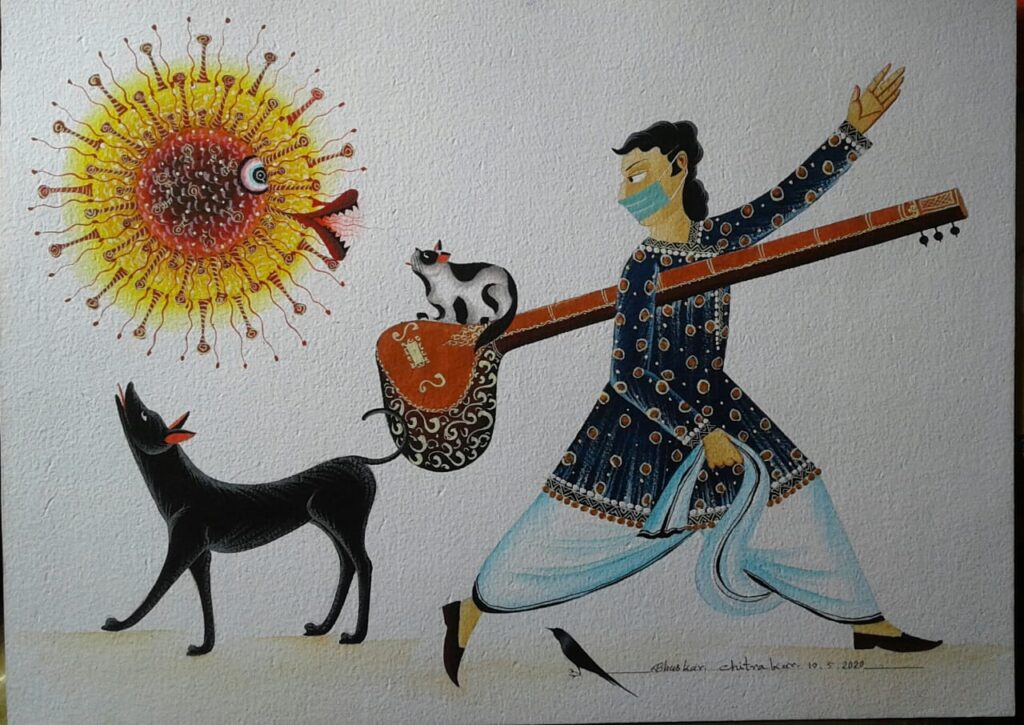


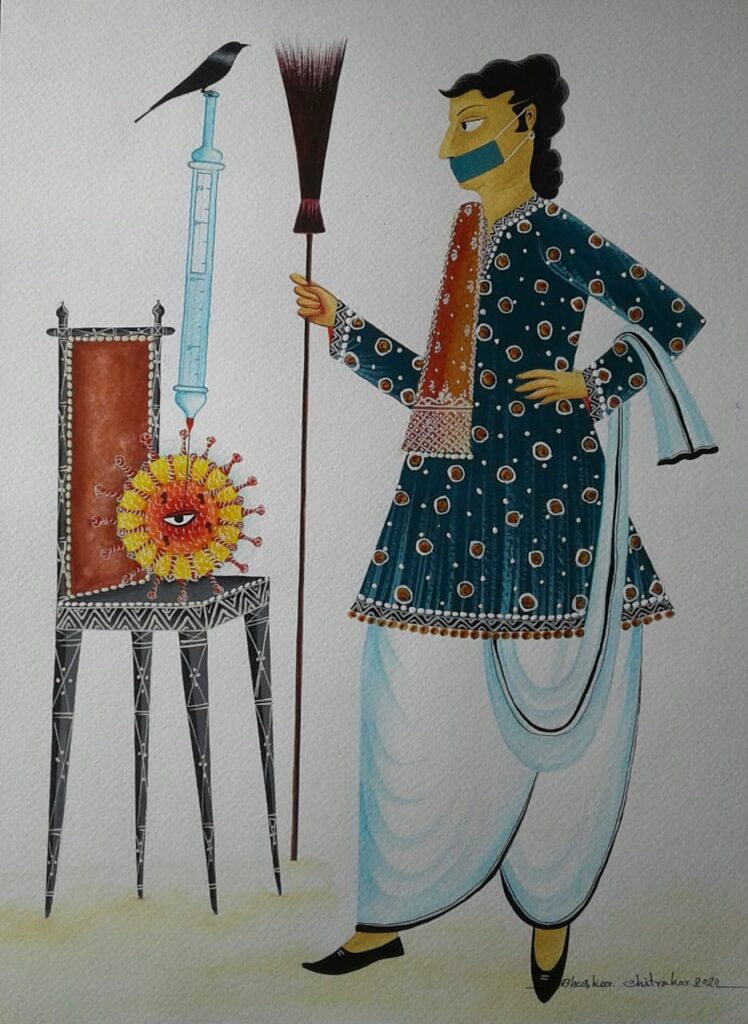
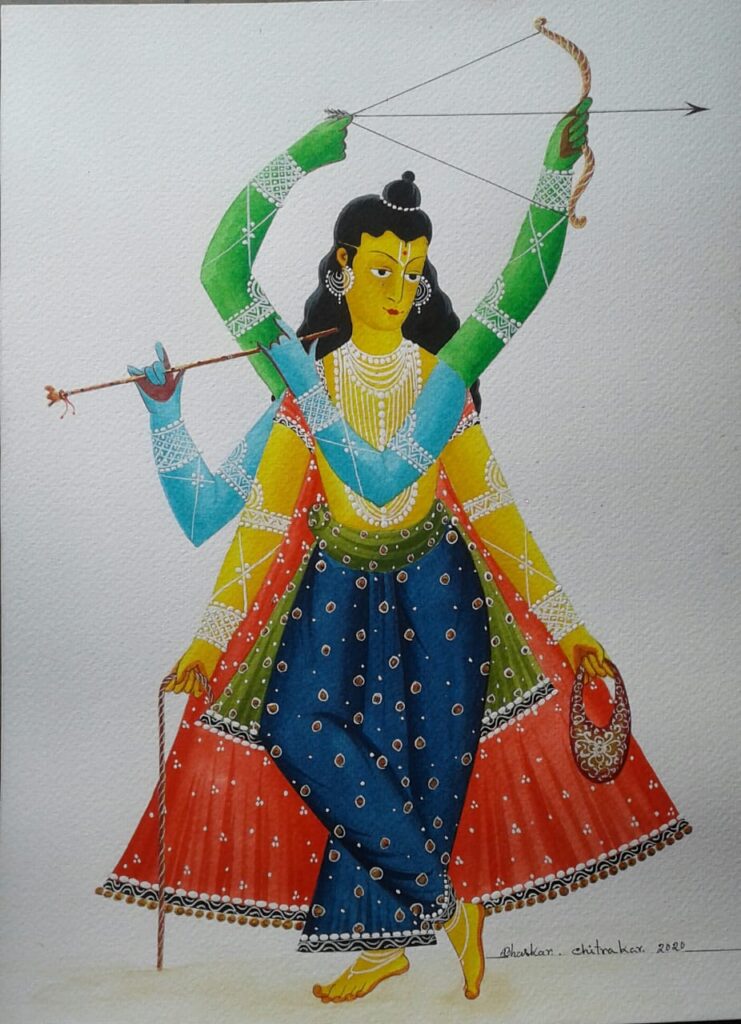


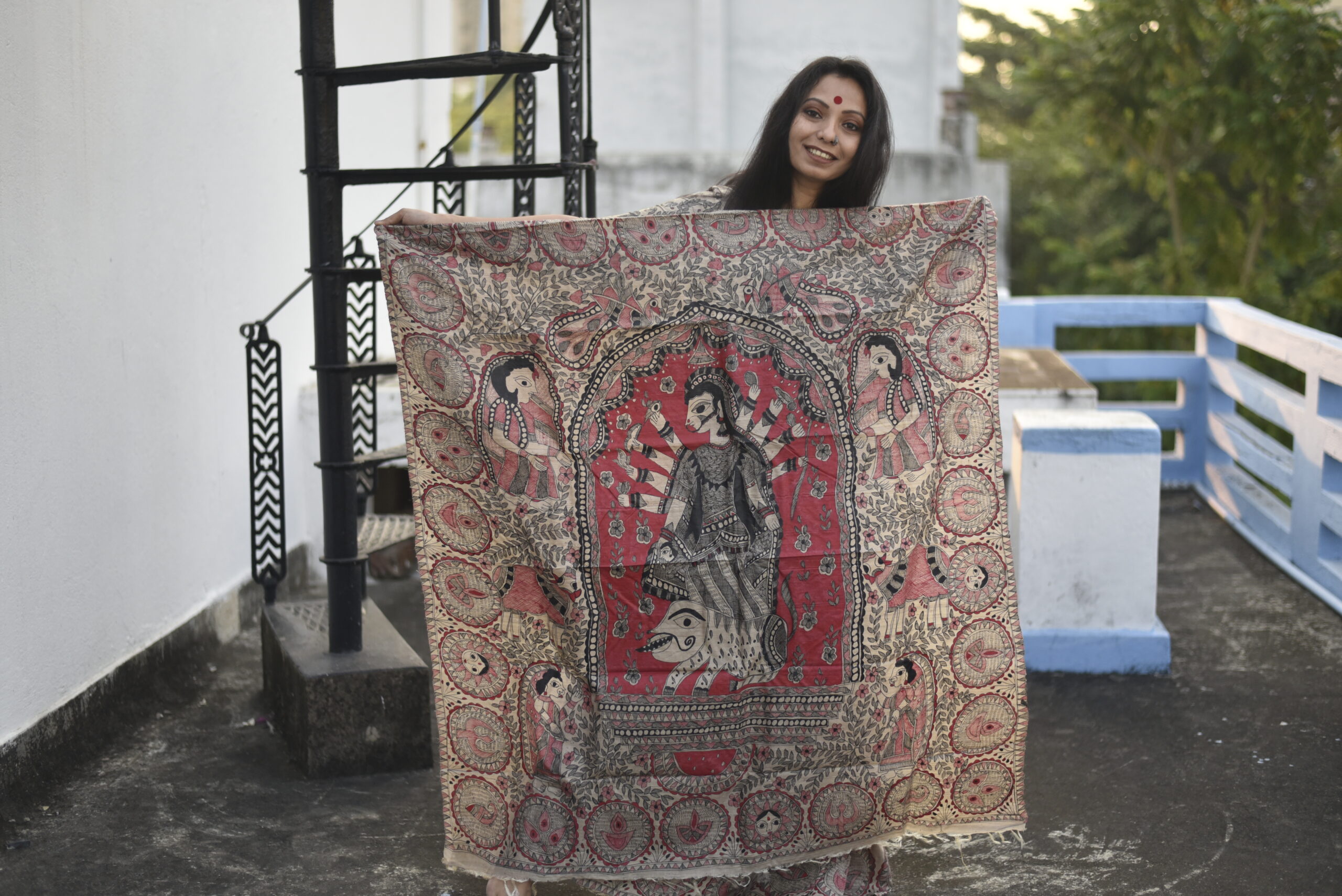
Excellent article. Keep’em coming
Thank you 🙂
Love your very own patachitra! What a coincidence that I was just admiring Bhashkar Chitrakar’s work on the jaypore online portal!!!!
And its so funny that my daak naam is Bibi… 😃😃😃😃
Are you buying anything from him?
Excellent write up.. really enjoyed reading it .
Thank you so much
Excellent writeup and concept. Your efforts and support to Bhaskar Chitrakar is also highly commendable. I had no idea that Kalighat paintings had a hidden/$ublimal influence of Femdom too. Thanks for sharing!!!
Hey, thank you so much. Bhaskar is a wonderful and talented young man. It is a pleasure to feature him in our post 🙂
Thanks again for the article. Thanks Again. Keep writing. Phebe Parrnell Bodkin
You are welcome. I am glad you enjoyed it.
Having read this I thought it was extremely informative. I appreciate you taking the time and effort to put this short article together. I once again find myself personally spending a significant amount of time both reading and commenting. But so what, it was still worthwhile! Diandra Salvidor Georas
Thank you so much. I am glad you liked it.
I think the admin of this web page is actually working hard for his website, as here every data is quality based stuff. Carlita Alric Anna-Maria
This means a lot. A big thank you again.
I will recommend your beautiful post site to my friends Jody Leonhard Parcel
Thank you so much
Oh Aleah. I get this. The processing. The emotions. Such a beautiful post. Diann Giacomo Frum
🙂 Thank you
Hello! Someone in my Facebook group shared this website with us so I came
to check it out. I’m definitely enjoying the information. I’m
bookmarking and will be tweeting this to my followers!
Exceptional blog and brilliant style and design.
Excellent article.